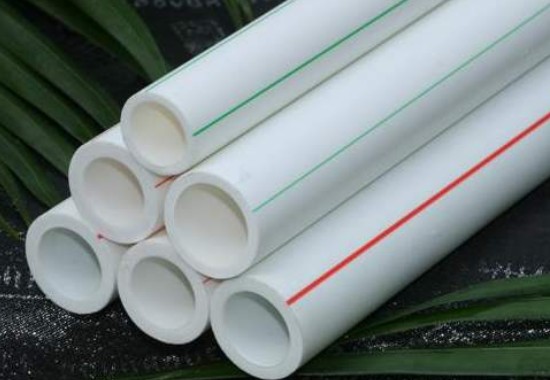Nov . 10, 2024 20:17 Back to list
Manufacturing Transition Couplings from HDPE to Steel for Enhanced Durability and Performance
HDPE to Steel Transition Coupling Bridging the Gap in Pipeline Infrastructure
In modern piping systems, the need for reliable and effective transitions between different materials has become increasingly essential. One such critical component is the HDPE (High-Density Polyethylene) to steel transition coupling. This device serves as a pivotal link in applications ranging from water supply to gas distribution, facilitating the seamless integration of HDPE piping with steel pipelines. In this article, we will explore the significance, design, and manufacturing processes involved in producing these couplings, along with their applications in various industries.
Importance of HDPE to Steel Transition Couplings
As two of the most commonly used materials in piping, HDPE and steel each have unique characteristics that make them suitable for specific applications. HDPE is renowned for its excellent resistance to corrosion, lightweight nature, and flexibility, making it an ideal choice for underground installations. Conversely, steel offers superior strength, durability, and the ability to withstand high pressures, which are crucial for certain industrial applications. The transition coupling serves as a bridge that allows these two materials to work together effectively, ensuring the overall integrity and reliability of the piping system.
Design Considerations
The design of HDPE to steel transition couplings must consider various factors to ensure functionality and longevity. These couplings typically feature a bell-shaped end designed to fit securely over the steel pipe and a fusion-welded connection point for the HDPE. The coupling must accommodate the different thermal expansion rates of HDPE and steel, minimizing the risk of stress or failure at the joint. Moreover, sealing mechanisms, such as O-rings or gaskets, are often incorporated to prevent leakage and maintain system pressure.
The design also accounts for chemical compatibility. While HDPE is resistant to a wide range of chemicals, its integration with steel requires careful consideration of potential galvanic corrosion, which can occur when dissimilar metals come into contact in the presence of an electrolyte. Therefore, coatings or insulating materials may be applied to the steel surfaces in contact with the coupling to mitigate this risk.
Manufacturing Processes
hdpe to steel transition coupling factory

The manufacturing of HDPE to steel transition couplings typically involves several steps, ensuring high-quality and durable products. The first stage is the selection of appropriate materials. High-density polyethylene plastic and high-grade steel are chosen based on the anticipated operating conditions and environmental factors.
Next, the steel components are fabricated through processes like machining, welding, and surface treatment to improve corrosion resistance. The HDPE components are produced using techniques such as extrusion or injection molding, shaping the plastic into the desired dimensions.
Once each component is ready, the coupling is assembled, usually involving a fusion welding process where the edges of the HDPE are heated and joined to the steel in a controlled environment. This technique ensures a robust bond that can withstand significant operational pressures. After assembly, the couplings undergo rigorous quality control inspections, including pressure tests and visual examinations, ensuring they meet industry standards and specifications.
Applications Across Industries
HDPE to steel transition couplings find applications in various sectors, including water distribution, gas transmission, wastewater management, and industrial processes. In municipal water systems, these couplings allow for the use of flexible HDPE in conjunction with sturdy steel pipes, facilitating installation in challenging terrains. In the oil and gas industry, they enable safe transmission of fuels and gases over long distances while combining the advantages of both materials.
Additionally, as infrastructure continues to evolve, the demand for these transition couplings is expected to grow. Their ability to provide a reliable connection between differing materials ensures that pipeline systems can effectively meet the increasing demands for efficiency, safety, and sustainability.
Conclusion
In conclusion, HDPE to steel transition couplings play a crucial role in the integration of varying materials within pipeline infrastructures. By understanding their importance, design considerations, manufacturing processes, and applications, industries can better appreciate these essential components. As we move towards more advanced and resilient piping solutions, the significance of reliable transition couplings will only continue to increase.
-
High-Quality PVC Borehole Pipes Durable & Versatile Pipe Solutions
NewsJul.08,2025
-
High-Quality PVC Perforated Pipes for Efficient Drainage Leading Manufacturers & Factories
NewsJul.08,2025
-
High-Quality PVC Borehole Pipes Durable Pipe Solutions by Leading Manufacturer
NewsJul.08,2025
-
High-Quality PVC Borehole Pipes Reliable PVC Pipe Manufacturer Solutions
NewsJul.07,2025
-
High-Quality UPVC Drain Pipes Durable HDPE & Drain Pipe Solutions
NewsJul.07,2025
-
High-Quality Conduit Pipes & HDPE Conduit Fittings Manufacturer Reliable Factory Supply
NewsJul.06,2025

